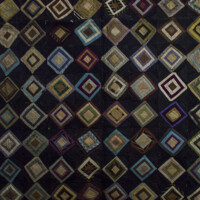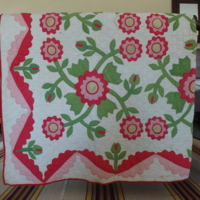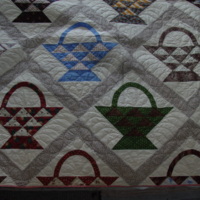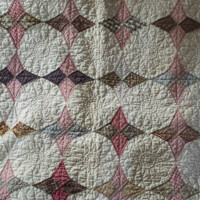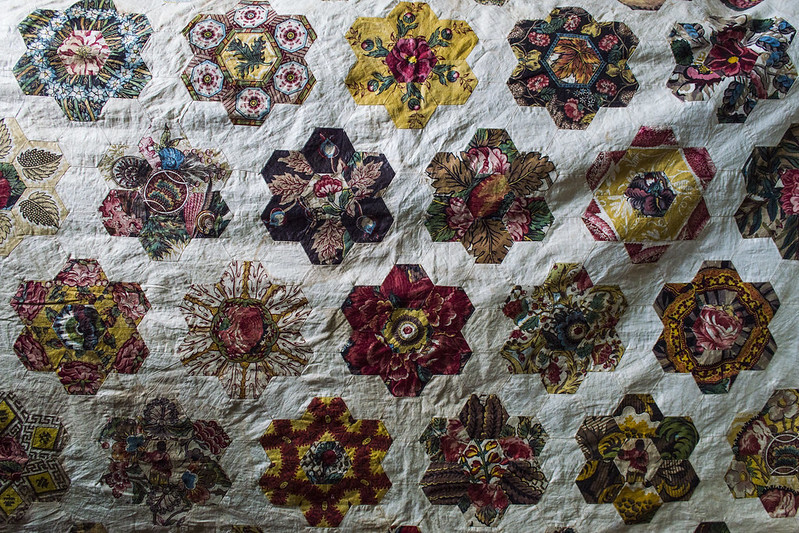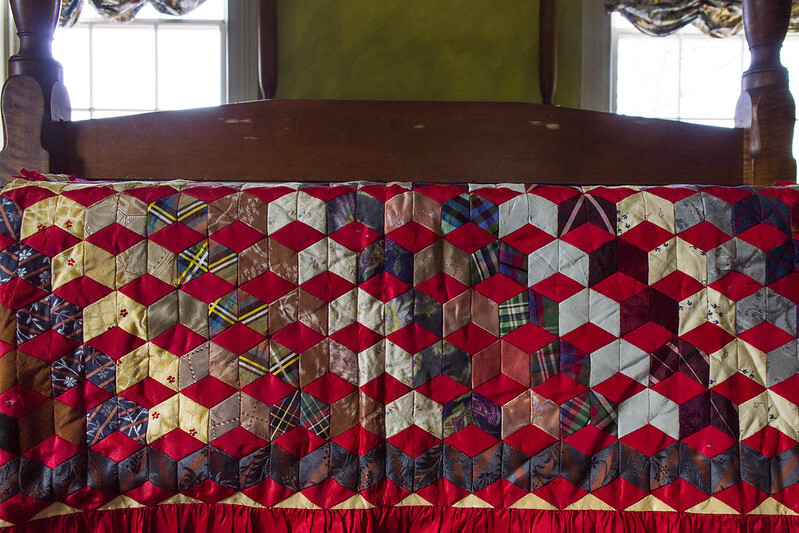Technological Innovations in the 19th Century
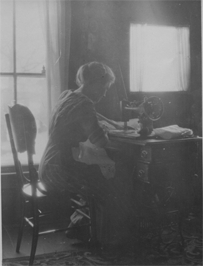
A woman working at a 19th century sewing machine. This photograph was taken by Anton T. Boisen in the early 20th century.
The Sewing Machine
While early iterations of the sewing machine were produced and patented as early as 1830, their use did not become widespread in well-to-do American homes for many decades. By the 1870s, due to mass production and a competitive marketplace, the sewing machine had become significantly more affordable to American consumers. It is at this point that one might consider the machine a common tool.
The sewing machine would eventually become a staple of home textile work. It made sewing long, straight seams easy and quick work. However, its adoption in the world of quilting was a gradual process.
Machine Sewn Quilts in Our Collection
At left are some examples of 19th century quilts from the Wylie House Museum collection that make use of a sewing machine. Notice that the majority of these examples are mostly sewn by hand and finished by machine.
Sewing machines were continually improving in design throughout the second half of the century, but they were generally not considered up to the delicate detail work needed to quilt, applique, and piece. They were best suited to straight stitches like those used on the outer binding tape of a quilt– a task that would be long and tedious if done by hand!
By the end of the century, quilters became more comfortable turning to the sewing machine. Machine sewing would eventually become so commonplace that hand-sewing and hand-quilting come back into fashion during a nostalgia-fueled quilt revival in the 1930s. Full circle!
Grandmother's Flower Basket Quilt
A treasure trove of 19th century chintz
The piecing of this exceptional quilt top was done using the template or whipstitch method, an English technique that found little favor in the United States. Originally unbacked and never quilted, the piece was most likely made as a decorative spread. Over two-hundred roller-printed chintz upholstery or drapery patterns are featured on the quilt. The hexagonal pieces of fabric were carefully cut to create striking patterns in each block. This technique, called “fussy cut”, makes for an especially beautiful design.
Roller Printing in the 19th Century
This Grandmother's Flower Garden quilt displays an impressive array of early 19th century roller-printed chintzes. Roller printing on cotton was a technology developed at the end of the 18th century in England. Coming after the existing printing technique of engraved copper plates which needed to be inked and applied to fabric individually, roller printing enabled a fast, inexpensive, and automated mode of pattern printing. Roller printing was a major contributor to the global industry of printed chintz.
Synthetic Dye and the Craze for Color
Another major technological achievement of the era was the development of synthetic dye. In the second half of the 19th century, a flurry of scientific development lead to the creation of scores of synthetic dyes in shades ranging from crimson to blue, lilac to acid green. In many ways, synthetic dyes were superior to natural dyes. They were colorfast, meaning they would not fade with washing or sun exposure; they were inexpensive; they were consistent in shade; they were vibrant; and their production was not reliant on the agricultural season or the sourcing of rare dyestuffs in nature. The development of synthetic dyes contributed to the decreasing price and increasing accessiblilty of colorful printed fabric in the 19th century.


